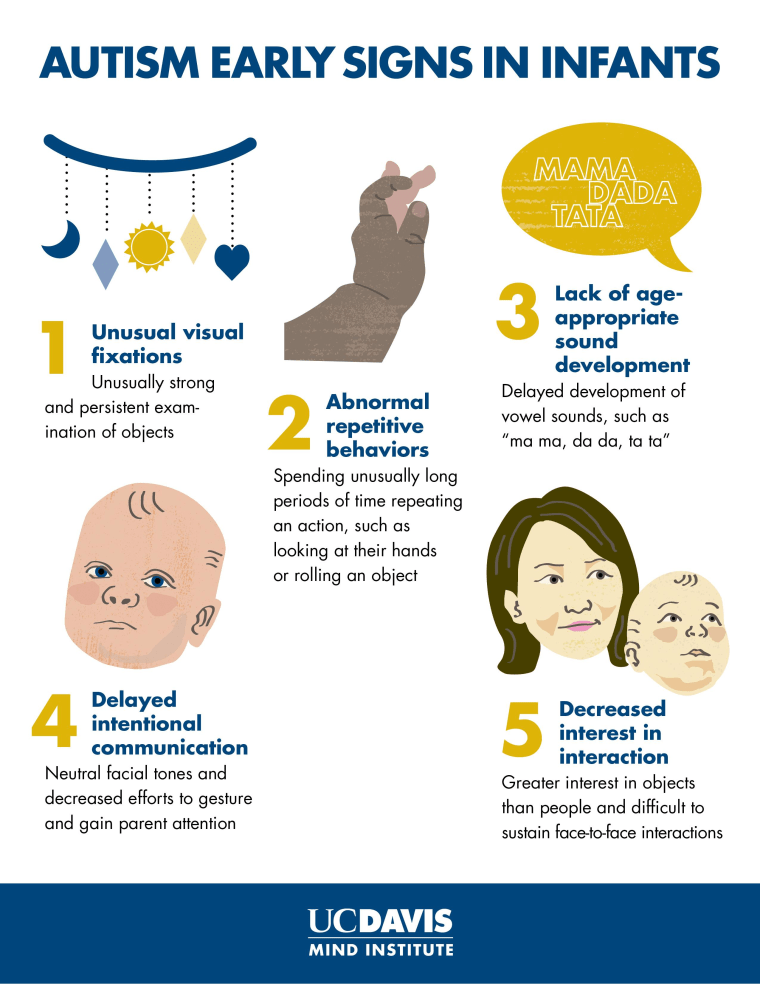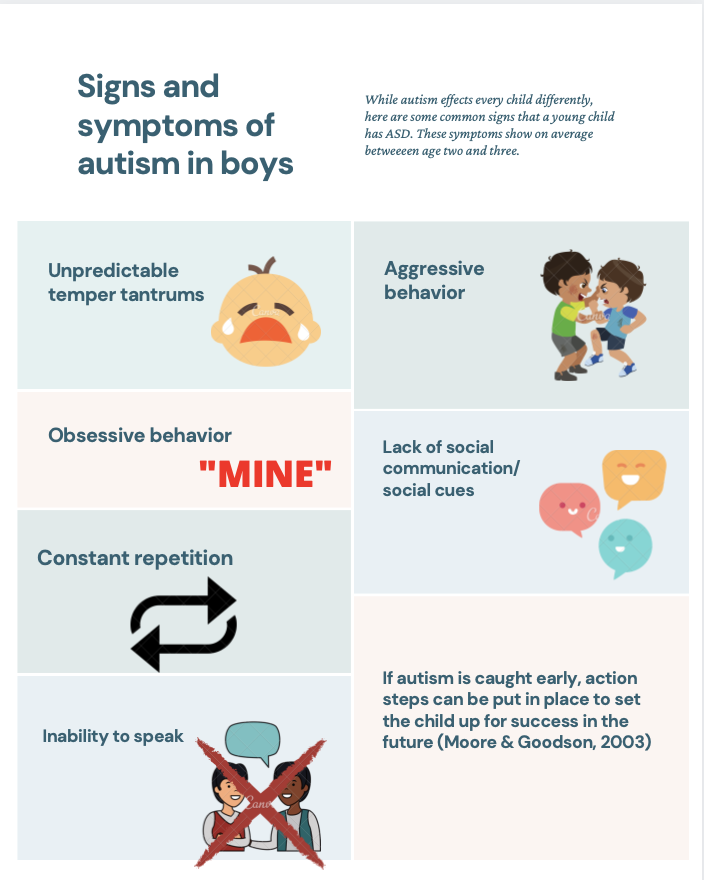Positives of routine-based learning guided by an Autism Therapist
Positives of routine-based learning guided by an Autism Therapist
Blog Article
Understanding the Impact of Behavioral Autism on Daily Life and Social Interactions
You could not recognize just how deeply behavioral autism affects day-to-day life and social interactions. Individuals on the spectrum often browse a globe filled with communication difficulties and sensory overload. These challenges can lead to frustration and isolation, impacting their relationships and general health.
Specifying Behavioral Autism and Its Features
Behavioral autism, usually described as autism range condition (ASD), encompasses a series of problems defined by challenges in social interaction, interaction, and repeated behaviors. You could discover that people with ASD commonly battle to translate social signs, which can bring about misunderstandings in conversations. They may find it difficult to develop eye get in touch with or participate in small talk, making social scenarios feel overwhelming.
Communication problems can manifest in numerous means, from delayed speech advancement to a choice for utilizing less words. Repetitive habits, such as hand-flapping or rocking, can act as coping mechanisms to take care of stress or sensory overload. These qualities can greatly impact day-to-day live, making it essential for you to understand and sustain those with ASD. By identifying these attributes, you can cultivate an environment that promotes acceptance and motivates effective interaction, helping individuals with autism grow in their day-to-day communications.
The Range of Autism: Recognizing Irregularity in Behavior
Autism spectrum condition (ASD) isn't a one-size-fits-all diagnosis; it differs extensively amongst people. You might observe that some people with ASD show light signs, while others may deal with more considerable obstacles. This irregularity can materialize in behaviors, rate of interests, and sensory sensitivities. You may come across individuals who are very spoken and involve quickly in discussions, while others could like singular activities or connect non-verbally.
Moreover, the way people with ASD respond to sensory input can differ significantly; some could be bewildered by loud noises or intense lights, whereas others prosper in boosting settings. The spectrum likewise consists of differences in social interactions; some people might struggle to analyze social hints, while others browse social setups with loved one ease. Comprehending this variability is important, as it aids you appreciate everyone's distinct experience and dressmaker assistance to their specific requirements, cultivating an extra comprehensive setting for everyone.
Communication Obstacles Faced by People With Autism
When you connect with people on the autism range, you might observe their one-of-a-kind communication difficulties. They frequently face troubles with both verbal and nonverbal hints, which can influence their social communications. Recognizing these barriers is crucial for cultivating far better connections and assistance.

Verbal Interaction Troubles
Several individuals on the autism range experience verbal communication difficulties that can substantially impact their daily communications. You could discover it challenging to share your ideas, feelings, or needs plainly. This can bring about disappointment for both you and those around you, as misunderstandings happen. You may deal with initiating conversations, preserving a subject, or comprehending subtleties in speech. Often, you may like making use of simple language or repetitive phrases, which can restrict your capability to participate in much deeper conversations. Your rate, tone, or quantity could not straighten with social expectations, creating others to misunderstand your objectives. Acknowledging these difficulties can help you and your support network develop methods to enhance interaction and cultivate far better links with others in your everyday life.
Nonverbal Interaction Barriers
Verbal interaction isn't the only challenge individuals on the autism spectrum face; nonverbal interaction barriers can be simply as significant. These difficulties can lead to misconceptions or false impressions of social signs, making interactions really feel complicated or frustrating. By attending to nonverbal interaction, you can find strategies to improve your social experiences and boost your total top quality of life.
Social Communication Effects
Social interactions can often feel frustrating because of the special communication obstacles encountered by people with autism. You could have a hard time with translating social signs, making it difficult to comprehend sarcasm or body language. This can result in misconceptions or awkward moments in conversations. In addition, launching and maintaining conversations might really feel difficult, triggering anxiousness in social circumstances. You may prefer structured atmospheres, making spontaneous communications uneasy. It's also usual to internet experience difficulty in participating in tiny talk, which can impede forming new friendships. Identifying these challenges can help you locate methods to enhance interaction, such as practicing social skills in safe settings or using aesthetic aids - Autism Therapist. Understanding your requirements allows you to navigate social communications with greater confidence and convenience.
Social Interaction and Relationship Building in Autism
While structure connections can be testing for individuals with autism, recognizing their special point of views and interaction designs can promote significant connections. You may notice that several individuals on the range like straight interaction and might have a hard time with social signs or small talk. By being uncomplicated in your communications, you can help produce an environment where they feel comfortable.
Put in the time to observe and pay attention just how they express themselves. This insight can assist you in steering conversations extra properly. Engaging in shared passions can likewise work as a bridge to deeper links. Whether it's a hobby, a favorite show, or a mutual passion, these typical strings can open up doors to relationship.
Daily Life Regimen: Navigating Obstacles and Methods
Maneuvering day-to-day life routines can be particularly challenging for people with autism, specifically when unanticipated adjustments take place. To browse these obstacles, take into consideration carrying out visual timetables or lists.
Establishing a routine that consists of sensory breaks can likewise be helpful. This helps develop an understanding environment.
Lastly, technique mindfulness methods to take care of anxiety and anxiousness. Basic breathing workouts or basing strategies can make a significant distinction. By integrating these techniques, you can enhance your day-to-day regimen other and lessen disturbances, making life really feel more manageable.
Strengths and Capacities of Individuals on the Autism Range
Comprehending day-to-day life regimens is just one element of the autism experience. Several individuals on the autism range have exceptional toughness and capabilities that establish them apart.
Additionally, your memory abilities usually radiate, specifically in areas of passion. Autism Spectrum Therapies. This knack for preserving details can make you a beneficial source in fields like art, technology, or scientific research. You might likewise exhibit strong aesthetic reasoning, allowing you to envision intricate concepts and fix troubles creatively
Furthermore, your distinct viewpoint on the globe can cultivate compassion and understanding in others, improving social communications. Accepting these toughness not just increases your confidence however also helps others value the diverse abilities you give the table.
Producing Comprehensive Settings for People With Autism
Creating comprehensive environments for people with autism begins with making sensory-friendly spaces that cater to their one-of-a-kind demands. You can also promote opportunities for social communication, assisting to build relationships and links. By making these modifications, you'll add to an extra inviting atmosphere for everyone.
Creating Sensory-Friendly Spaces
While making sensory-friendly areas, it's essential to reflect on the special needs of people with autism. Include quiet areas where people can pull back and charge when bewildered. Consist of aesthetic routines or clear signs to assist people browse the space with confidence.
Advertising Social Communication Opportunities
Creating sensory-friendly rooms not only addresses private comfort yet also sets the stage for purposeful social communications among individuals with autism. Encourage peer mentoring, coupling individuals with autism with supportive peers that can direct them via social situations. By applying these methods, you can improve social opportunities, aiding individuals with autism build friendships and enhance their social skills in a risk-free, inviting setting.

Regularly Asked Questions
Just How Can Buddies Support Someone With Behavioral Autism?
You can support a buddy with behavioral autism by holding your horses, paying attention proactively, and respecting their limits. Take part in activities they take pleasure in, communicate freely, and produce a comfy setting where they really feel valued and comprehended.
What Resources Are Available for Parents of Kid With Autism?
You can discover numerous resources for moms and dads of kids with autism, including support groups, instructional internet sites, and neighborhood see this page social work. Getting in touch with various other moms and dads can also give valuable understandings and shared experiences to assist navigate challenges.
Can Behavioral Autism Adjustment In Time?

Yes, behavior autism can change with time. You may notice shifts in interaction, social abilities, and behavior as your kid expands. Early treatment and assistance typically play essential duties in these developmental adjustments.
Exactly How Do Sensory Level Of Sensitivities Influence Daily Life?
Sensory sensitivities can make everyday experiences frustrating. You may have a hard time with brilliant lights or loud noises, leading to stress and anxiety or evasion. Finding settings that accommodate your needs can greatly improve your comfort and total life.
What Are Typical Misconceptions Concerning Behavioral Autism?
You might believe behavioral autism only influences interaction abilities, yet it's more complex. Numerous think people do not have empathy or intelligence, which isn't true. Understanding these mistaken beliefs aids foster approval and support for those on the spectrum.
Behavioral autism, typically referred to as autism spectrum condition (ASD), includes an array of problems defined by obstacles in social communication, interaction, and recurring actions.Social communications can usually really feel frustrating due to the one-of-a-kind interaction obstacles dealt with by people with autism.Designing sensory-friendly areas not just addresses individual comfort yet additionally sets the stage for significant social communications among individuals with autism. Encourage peer mentoring, matching individuals with autism with encouraging peers that can lead them via social circumstances. By applying these approaches, you can boost social opportunities, assisting individuals with autism construct friendships and strengthen their social skills in a risk-free, inviting setting.
Report this page